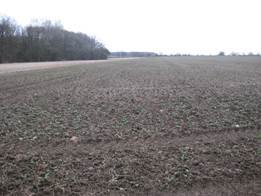PGRO Crop Update Number 1: 13th March 2025
PGRO Crop Update: 2503
Spring drilling:
Sowing rate of spring beans and peas
The optimum plant density for spring beans is 45-55 plants per square metre established. Marrowfat peas should be sown to give a planting density of 65-70 plants per m², and large blues and white peas 80-90 plants per m².
Field losses may vary between site and location, but typically we expect field losses for spring beans to be 5%, and for peas, expected losses are in the table below.
The following active substances will give good control of both chocolate spot and rust:
| Expected field losses | ||
| Drilling timing | Marrowfats (large seeds) | Other peas |
| Very early (February) | 15 | 18 |
| Early (March) | 10 | 13 |
| Mid-season (April) | 5 | 7 |
Use the following to calculate seed rate:
The PGRO Crop Monitor App contains a seed rate calculator and is available in Apple and Google Play stores.
Winter beans may be sown in the spring, but plant density should be increased to around 40 plants/ m² and yield is likely to be lower than winter beans sown in the autumn. Harvest date may be 7-10 days later than winter beans sown in autumn.
Don’t rush planting – it’s better to wait for good soil conditions rather than try to stick to calendar dates.
If possible, choose varieties with good downy mildew resistance. Downy mildew is a soil-borne disease that can affect yield and quality. Details of the relative resistance to downy mildew can be found in the PGRO Pulse Descriptive List of peas, available at www.pgro.org.
Sivanto Prime in pulses and vegetable legumes
Sivanto Prime (MAPP 21263), containing Flupyradifurone, gained approval in the following crops on 6th March 2025: Broad beans, French beans, runner beans, beans without pods, combining peas, edible podded peas, vining peas, spring beans and winter beans. Sivanto Prime is an effective aphicide which has contact and ingestion activity, with trials indicating protection for ~7 days. A single application is permitted at 0.125 l/ha, and to protect non target insects/ arthropods, the product must not be applied after 13th July. Harvest interval is 3 days for broad beans, beans without pods and vining peas, and 7 days for French beans, runner beans, combining peas, edible podded peas, spring beans and winter beans. PGRO website technical information will be updated in due course.
Winter bean disease
There have been early reports of Cercospora zonata in winter beans.

All PGRO Technical Updates have been revised to include the changes in pesticide availability for peas and beans. PGRO publications are available as free downloads from the PGRO web site www.pgro.org User passwords are available on request through the web site.



